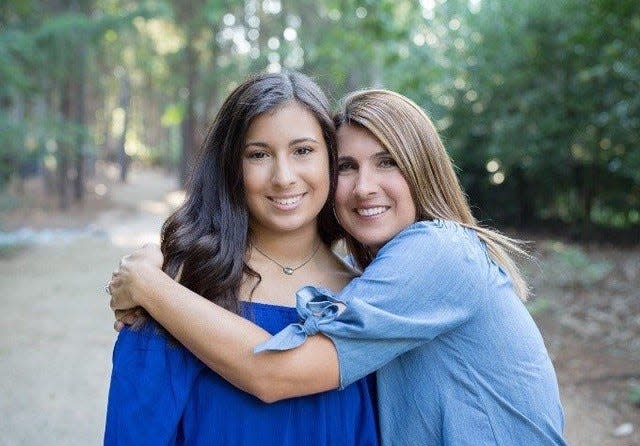After my daughter's cancer diagnosis, I helped discover our town is a cancer hot spot.
It shouldn’t take a mother with a sick child to find out whether a town is a safe place to live, but it did — because our state and federal government failed us.
After two years of painful headaches, body temperature problems, weight fluctuations and constant fatigue, my 16-year-old daughter, Taylor, was diagnosed with papillary thyroid cancer on June 28, 2017. My life would never be the same, and neither would hers.
If she had been the only one to have been diagnosed with thyroid cancer, I would have accepted this as a card we had been dealt; however, that was not the case. Immediately after we shared our heartbreaking news, neighbors and other nearby residents reached out to me because they or their children had also been diagnosed with thyroid cancer. It did not take long to realize that there was something wrong, especially when three thyroids were removed on my small street within the year. This was not normal.
So what is normal? I turned to the experts in the medical and scientific community to better understand what the expected rates of these cancers in this small population should be. Taylor’s doctor concurred that this was not normal. Research shows that over the last few years, the average rate of thyroid cancer is 14-16 cases per 100,000 people. The numbers were not adding up.
Fighting for my family
My daughter’s doctors put me in touch with Heather Stapleton, an eminent environmental researcher from Duke University’s Nicholas School of the Environment who had published a recent study on thyroid cancers and environmental factors. She confirmed that an environmental study was needed but said funding was not available. If I could find a way to fund a study, she agreed to take on the work.
Fires and deforestation: I've seen the Amazon rainforest fires. They're a warning from the Ghost of Climate Future.
It took a social media campaign, a 5k run as a fundraiser and an exhausted mother, but within six months — while my daughter was sick and I was seeing her through radiation treatment and surgery — I raised more than $100,000 to fund the study.
Stapleton’s team is analyzing more than 20 years of cancer rates in Mooresville, North Carolina, and studying the environment around Lake Norman. Already, their work has confirmed that thyroid cancer rates are far higher than they should be — with rates in two Mooresville ZIP codes as much as three times higher than expected during numerous years. Not normal.
After the study was underway, Dr. Stapleton brought a Duke colleague onto the team, Avner Vengosh, an expert on coal ash and water contamination. One day, I accompanied the team on a boat that was collecting water samples from Lake Norman. Dr. Vengosh looked across the lake at the towers of Duke Energy’s Marshall Steam Station, one of the two plants in the area, and asked, “You live right next to that?” In that moment, I wondered whether I had failed my family.

Coal ash is the residue left behind when coal is burned to generate electricity. It contains heavy metals, including arsenic, boron, lead and mercury. Dr. Vengosh has stated numerous times that coal ash should be treated as a hazardous waste.
I learned it was a common practice in North Carolina to use coal ash as a substitute for dirt in construction projects. This included structural fill and landscaping. Forty-thousand tons of toxic dirt was buried next to my daughter’s high school.
Political process is failing families
The research team hasn't yet directly linked the coal ash contamination to what is clearly a cancer cluster around Lake Norman. Even so, the presence of all this toxic material and this cancer cluster seems like it could be more than a coincidence.
Government should pop all our bubbles: My social media feeds look different from yours, and it's driving political polarization
I am angry that so little has been done to protect public health from this menace. The Trump administration wants to continue to allow coal ash to be used in construction in unlimited quantities. This would endanger families across the nation.
Once it became clear that we lived in a cancer cluster and that toxic coal ash was everywhere in our town, we had to act. We left our beautiful home. Our children left their school and friends. We left our community, our friends and our jobs, everything we had built. We had no choice.
My daughter was lucky as the cancer had not spread beyond her neck, but she faces an uncertain future with her health. We will continue to fight, to get the answers we deserve, and ask the state of North Carolina and the U.S. Environmental Protection Agency to finally put the people’s health first.
Susan Wind is a cybercrime consultant living near St. Augustine, Florida.
You can read diverse opinions from our Board of Contributors and other writers on the Opinion front page, on Twitter @usatodayopinion and in our daily Opinion newsletter. To respond to a column, submit a comment to letters@usatoday.com.
This article originally appeared on USA TODAY: Coal ash pollution: North Carolina mom digs into possible cancer cause

